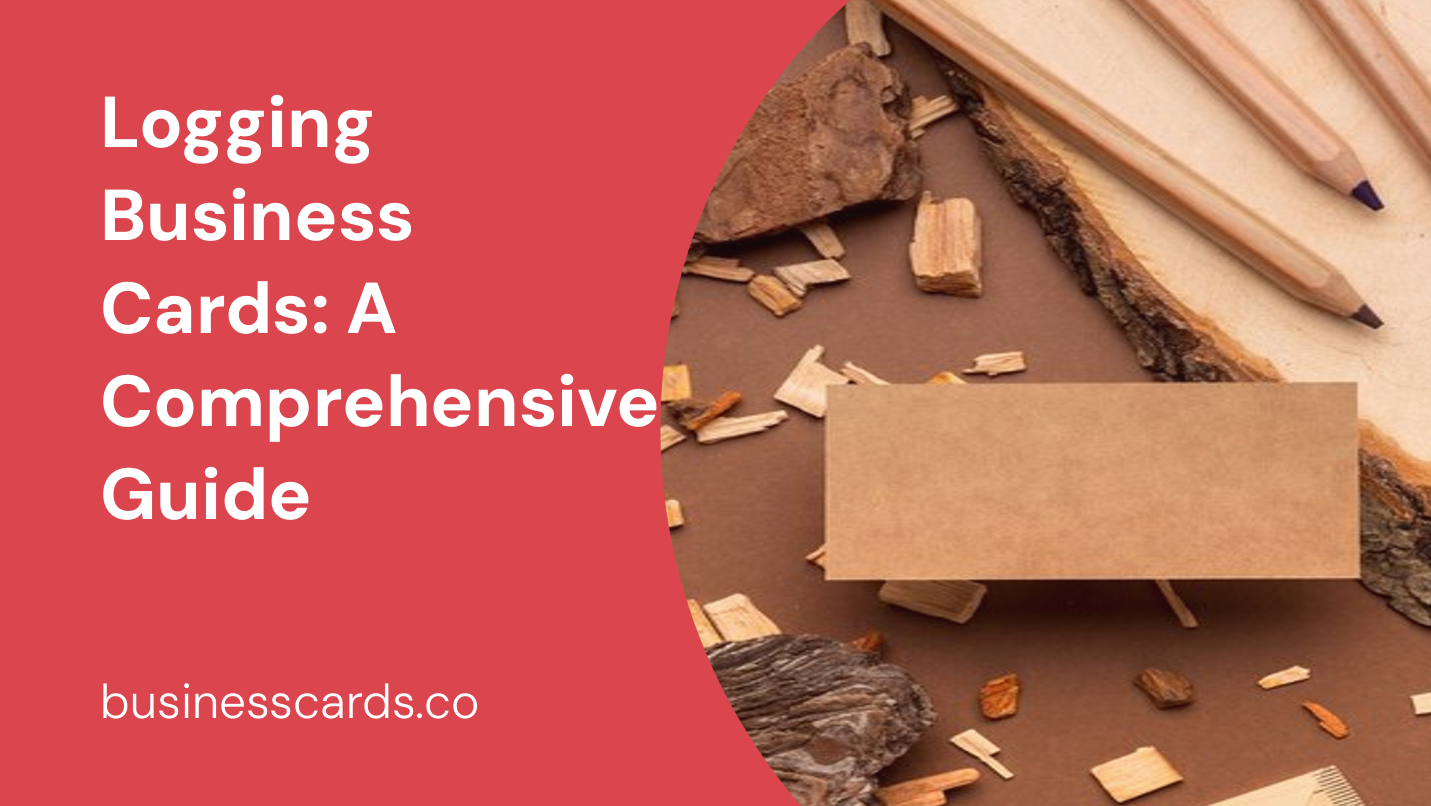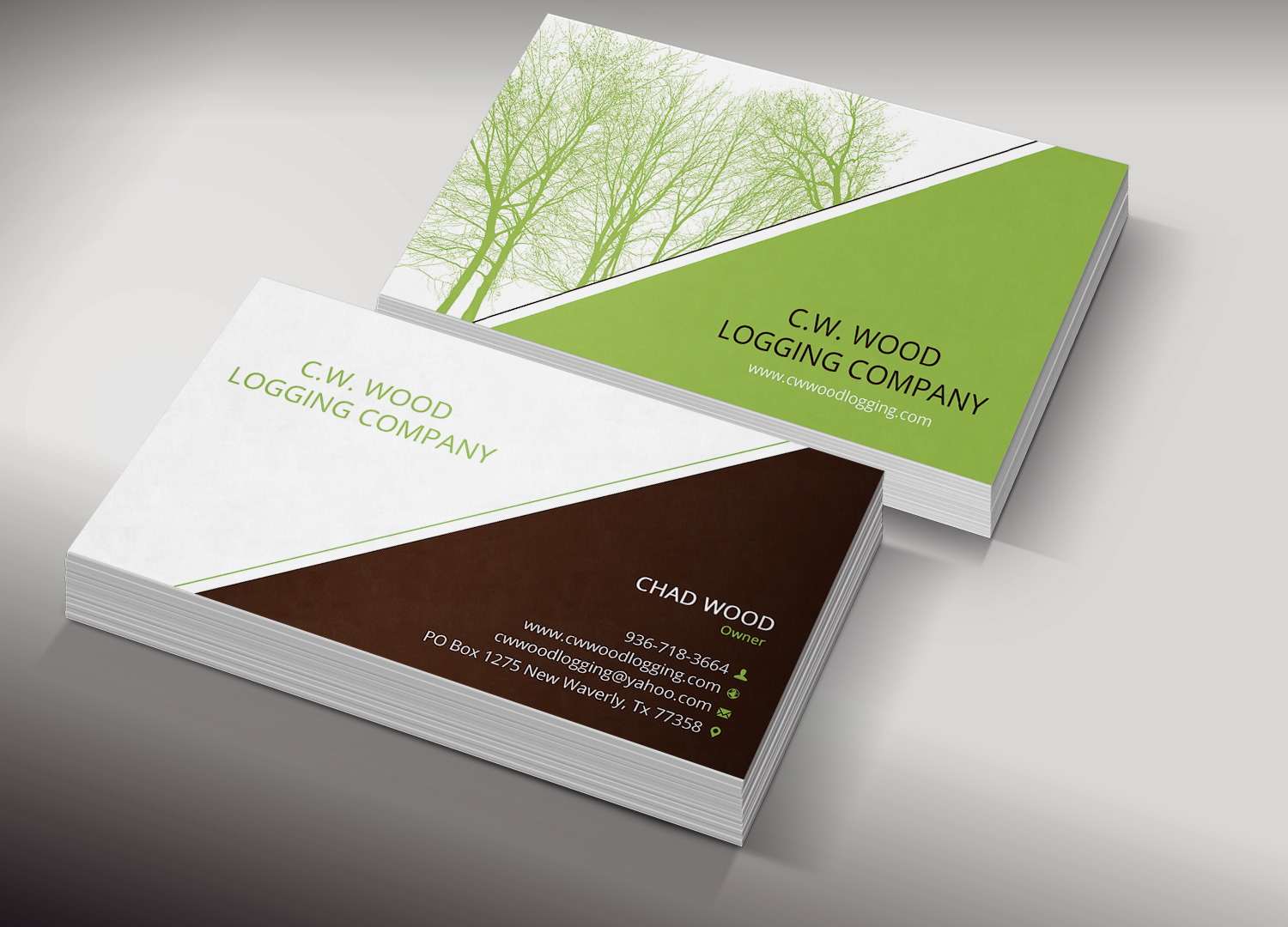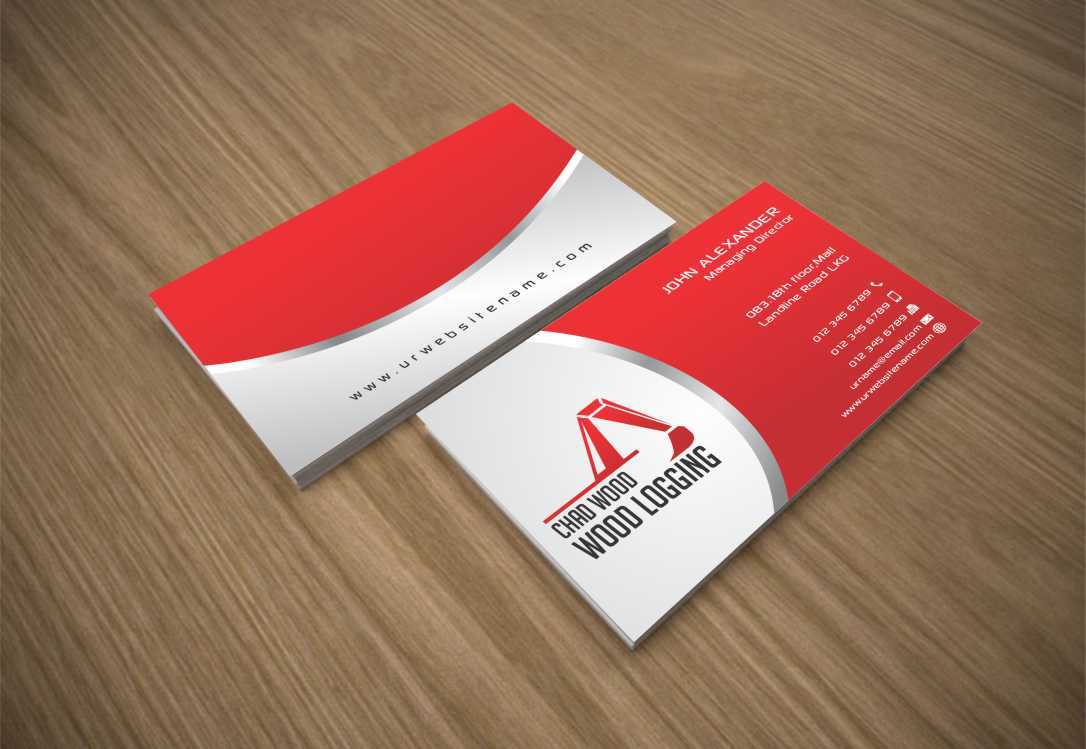
Logging business cards are an essential tool for professionals in the forestry industry. These specialized business cards provide vital information and serve as a tangible representation of your business. In this guide, we will delve into the importance of logging business cards, what information to include, and how to effectively design and distribute them. Whether you’re a logger or own a logging company, this article will provide you with valuable insights to enhance your branding and networking efforts.
Why Logging Business Cards Matter

As a professional in the logging industry, the benefits of having well-designed and strategically distributed business cards should not be underestimated. Logging business cards create a lasting impression and serve as a tangible reminder of your expertise. Hereâ_x0080__x0099_s why logging business cards matter:
- Increased visibility: Business cards act as mini billboards, featuring your company logo, contact information, and other relevant details. By handing out your cards to potential clients or industry peers, you’re increasing your brand visibility.
- Networking and lead generation: Logging business cards facilitate networking opportunities at industry conferences, trade shows, and other events. They provide a convenient way for others to contact you and serve as an effective lead generation tool.
- Professionalism and credibility: Well-designed business cards convey a sense of professionalism and instill confidence in your potential clients. A professional-looking card reflects positively on your business and can help establish credibility in the industry.
Essential Information to Include on Logging Business Cards

When creating your logging business cards, it’s crucial to include the right information for maximum impact and functionality. Here are the essential details to feature on your cards:
- Company name and logo: Display your company name prominently on the business card, preferably in a font and size that is easily readable. Including your logo adds a visual element to reinforce brand recognition.
- Your name: As an individual within the logging industry, include your name on the card to personalize the interaction and make it easy for recipients to remember you.
- Job title: State your job title to clarify your role within the company or industry. This can be especially useful if you’re attending industry-specific events where people may have limited knowledge about the various positions in logging.
- Contact information: Provide all relevant contact information, such as your phone number, email address, and website URL. Including various ways to connect with you ensures that potential clients or industry colleagues can choose a method that suits them best.
- Physical address: If your logging business has a physical location, including the address on your business cards can help establish trust and legitimacy. However, if your business operates solely online or within a specific geographical area, omitting the physical address may be more appropriate.
- Social media handles: In today’s digital age, social media can play a significant role in networking and branding. Including your social media handles, such as your Twitter, LinkedIn, or Instagram usernames, allows recipients to connect with you on these platforms.
Designing Effective Logging Business Cards
The design of your logging business cards is just as important as the information you include. A well-designed card enhances readability, reinforces your branding, and leaves a lasting impression. Here are some tips to consider when designing your logging business cards:
- Keep it simple: A cluttered design can be overwhelming and detract from the essential information. Opt for a clean and straightforward layout that allows the text and logos to shine.
- Choose readable fonts: Select fonts that are easy to read, even at small sizes. Avoid overly decorative or script fonts that may sacrifice legibility. Pro tip: Stick to a maximum of two fonts to maintain consistency and professionalism.
- Use appropriate colors: Opt for colors that align with your branding and industry. Earthy tones and shades of green often work well for logging businesses, as they evoke a sense of nature and sustainability.
- Include your logo: Incorporate your company logo on the business card, ensuring it is clearly visible and consistent with your overall branding. A well-placed logo creates brand recognition and reinforces your professionalism.
- Consider card texture: Choosing a textured cardstock or specialty finish, such as matte or glossy, can add a tactile element to your business cards. This can make your cards stand out and leave a positive impression.
- Add a call to action: Encourage recipients to take action by including a call to action on your business cards. This could be a request to visit your website, follow you on social media, or contact you for a free consultation.
Distributing Logging Business Cards for Maximum Impact

Creating professional-looking logging business cards is only half the battle. Effectively distributing them ensures that your cards reach the right people and generate the desired results. Here are some strategies for distributing your business cards:
- Industry events: Attend relevant industry conferences, trade shows, and networking events to connect with potential clients and industry peers. Hand out your business cards to those you meet, ensuring they have a tangible reminder of your interaction.
- Local business networks: Engage with local business networks and chambers of commerce. Attend their events and share your business cards with fellow members, as well as with potential clients who may be seeking logging services.
- Mail campaigns: Include your business cards in direct mail campaigns targeting potential clients. This can be an effective way to introduce your company and services to a broader audience.
- Leave them at relevant establishments: Identify local establishments frequented by potential clients, such as hardware stores or construction companies, and leave a stack of business cards at their counters or bulletin boards.
- Include them in thank-you notes: When expressing gratitude to a client or colleague, include a business card along with the thank-you note. This serves as a reminder of your services and provides an opportunity for them to refer you to others.
Key Takeaways

- Logging business cards are essential tools for professionals in the forestry industry, providing increased visibility, networking opportunities, and establishing professionalism.
- Include your company name, logo, your name, job title, contact information (phone, email, website), physical address (if applicable), and social media handles.
- Design your logging business cards with simplicity, readability, and appropriate colors in mind. Incorporate your logo, and consider unique finishes or textures for added impact.
- Distribute your business cards at industry events, through local business networks, via mail campaigns, and by leaving them at relevant establishments.
- Logging business cards play a significant role in establishing your professional presence and enhancing your networking efforts within the logging industry.
In conclusion, logging business cards play a vital role in the forestry industry, serving as powerful marketing tools and facilitating valuable networking opportunities. By incorporating the right information, designing them effectively, and strategically distributing them, you can leave a lasting impression on potential clients and industry peers. Invest time and effort into creating professional-looking logging business cards, and watch as they contribute to the growth and success of your logging business.
Samuel Anderson, a branding connoisseur, brings his knack for design and a strong marketing background to the forefront. He’s a voracious reader and enjoys delving into psychology, which he incorporates into his marketing strategies for business cards and brand development.